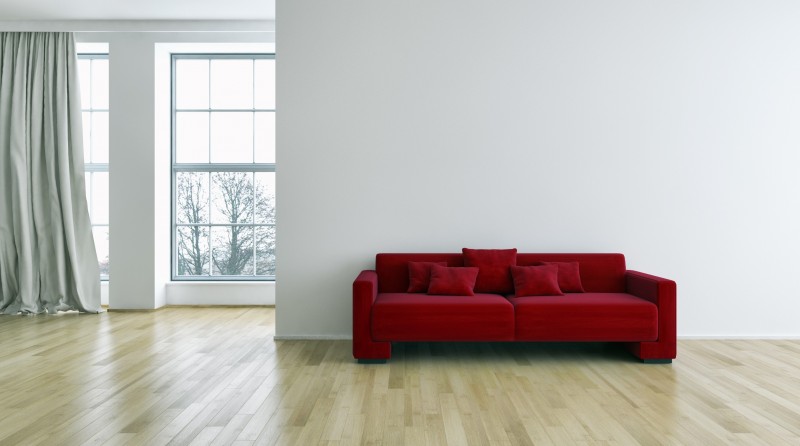
Are you deciding whether you should let your property furnished or unfurnished? Many factors come into play when making the decision, like the location, target market, and your return-on-investment goals.
If you’re on the fence about letting a property furnished or unfurnished, here’s an overview of the pros and cons to help you decide.
What Does "Furnished" Include?
As a minimum, all properties let in the UK need to include various amenities, like white goods, kitchen and bathroom fixtures, flooring, and curtains or blinds.
While there isn’t a legal definition of what a furnished property includes, it needs to be considered ‘fit to be lived in’ from the day the letting begins. This usually means it has:
-
Beds: Enough for each bedroom
-
Wardrobes: Appropriate for the number of bedrooms and people
-
Chest of drawers: One or two sets per bedroom
-
Sofas: Ideally to seat the number of people living at the property
-
Dining room table and chairs: Preferably with enough chairs to seat the number of people living at the property
-
Tableware: Enough to cater to the number of people living at the property
What are the Benefits of Letting a Property Furnished?
Choosing to let a furnished property ultimately depends on the target market, the local area and your desired rent price. By letting a property furnished, you can:
-
Get a better or higher rent price
-
Make your property more attractive
-
Attract short-term tenants
Are There Downsides to Letting a Property Furnished?
Despite the benefits, there are some downsides to letting your property furnished, including:
- Size of market: A furnished property doesn’t always attract long-term tenants, so you may appeal to a smaller market seeking short-term lets.
- Maintenance: It adds maintenance, like handling repair and replacement work.
- Costs: You’ll need to pay for the furniture, plus repair and disposal costs.
- Compliance: All furniture provided in a rental property must meet fire resistance requirements. Mattresses and bed bases must be labelled to show they meet BS7177 – a safety standard set down by law. This includes sofas, chairs, beds, and padded headboards. All furnishings must pass the 'match resilience test' and the 'cigarette test'.
What Does Unfurnished Include?
Unlike furnished properties, there is a legal definition of what an unfurnished property includes. They must have a minimum of:
-
White goods, including a cooker, fridge, freezer and washing machine
-
Kitchen and bathroom fixtures
-
Flooring or carpets
-
Curtains or blinds
What are the Benefits of Letting a Property Unfurnished?
Even though furnished properties are usually more desirable, there are some benefits to letting a property unfurnished, including:
-
Less maintenance: Furnished properties come with a requirement to maintain the furnishings. With an unfurnished property, you won’t have this responsibility.
-
Attract long-term tenants: Long-term tenants often bring their own furniture to a rental, so an unfurnished property could be more desirable to this market.
-
Cheaper: Since you won’t have to pay for furniture, your outlay and running costs could be cheaper.
Are There Downsides to Letting a Property Unfurnished?
Naturally, unfurnished properties attract a different clientele. Letting an unfurnished property can mean you need to charge a lower rent price.
Plus, you may not be able to compete with other nearby rentals if you’re not providing what people want. The best thing to do is research what works well for your property type in the local area before you decide.
Landlords: Need Advice?
Deciding whether to let your property furnished or unfurnished depends on many things, particularly related to the market in your area.
For personalised advice about letting properties in Northampton & Rugby, our friendly team at Horts are here to help. Give us a call today on 01788 550044 or 01604 639933 or email us at rentals@horts.co.uk or lettings@horts.co.uk.
You may also be interested to read:
Investing in Buy-To-Let Property: A Guide for First-Time Landlords
Renting Out a Property in Northampton: A Step-by-Step Guide for First-Time Landlords
Frequently Asked Questions About Letting a Furnished or Unfurnished Property
Is there a difference between a furnished and unfurnished rental property?
Yes. In the UK, all properties must include white goods, kitchen and bathroom fixtures, flooring, and curtains/blinds, regardless of if they are listed as furnished and unfurnished properties . Furnished properties include essentials like beds, wardrobes, and often a sofa and dining table.
What are the pros and cons of furnished vs unfurnished rentals?
Furnished rental properties can attract higher rents and short-term tenants but require more maintenance and upfront costs. Unfurnished rentals are easier to maintain and attract long-term tenants but may lead to lower rents.
Who typically prefers furnished properties?
Young professionals, students, and those relocating for short-term work often prefer furnished properties as they require less upfront investment.
Can I offer a part-furnished property?
Yes, you can offer a part-furnished property, but clearly outline what furniture is included in the tenancy agreement for prospective tenants. Be sure to include essentials like a cooker, fridge, and washing machine, even in part-furnished rentals.
